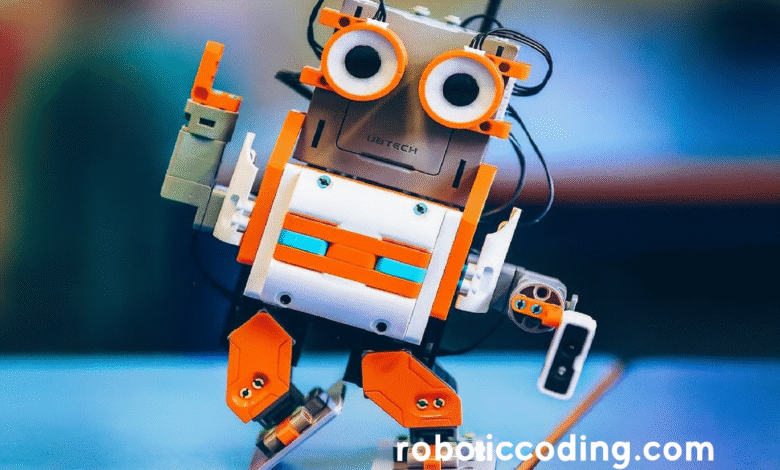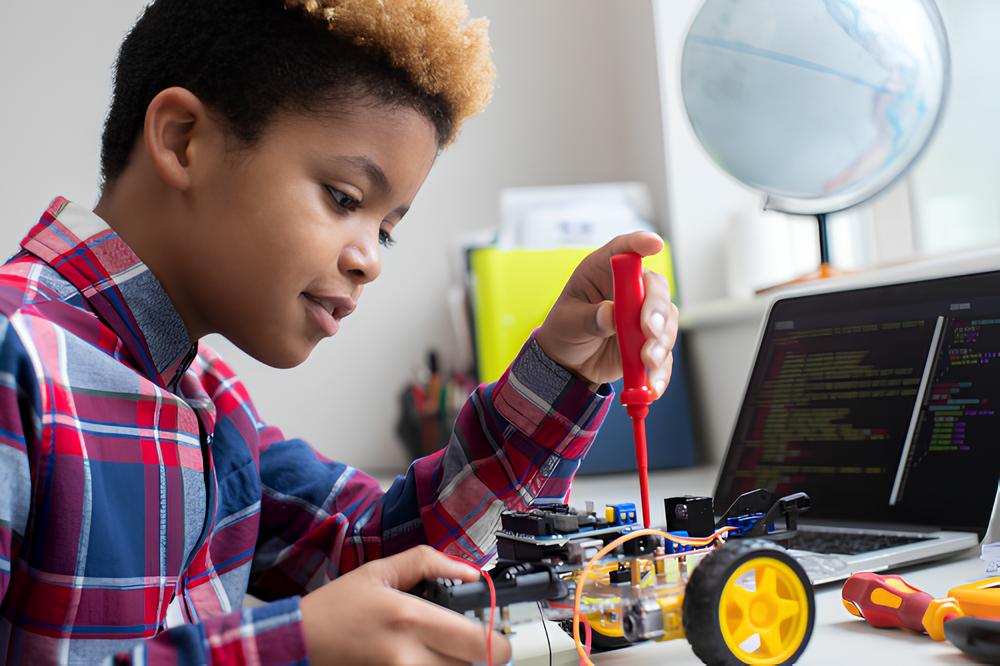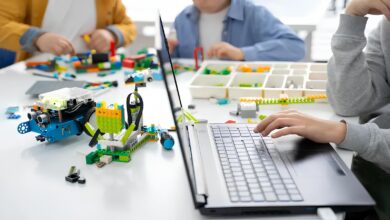Robotics Coding for Kids

Robotics Coding for Kids: A Gateway to the Future
Technology is advancing at lightning speed, and children today grow up in a world surrounded by smart devices, apps, and artificial intelligence. Introducing robotics coding for kids is more than just teaching programming—it’s about unlocking creativity, problem-solving, and preparing them for a future where digital skills are as essential as reading and writing. Imagine your child not just playing with robots, but actually building and programming them. Sounds exciting, right? That’s exactly what robotics coding offers.
1. Robotics Coding for Kids: A Gateway to the Future
Robotics coding is like opening a treasure chest of imagination for children. Instead of passively using technology, kids become creators who control how machines behave. This shift from consumer to creator builds confidence and sparks curiosity. Think about how empowering it feels when a child writes a few lines of code, presses run, and suddenly a robot moves, lights up, or responds to commands—it’s like magic, but powered by logic.
Moreover, robotics coding introduces kids to STEM (Science, Technology, Engineering, Mathematics) concepts in a hands-on way. Rather than memorizing formulas, they apply math to calculate distances, use science to understand sensors, and practice engineering to design functional robots. These lessons go beyond textbooks because kids actually see the results of their work come to life.
This skill isn’t just for budding engineers. Even kids who love art, storytelling, or music can integrate coding into their passions. Robots can dance to music, draw patterns, or even act out short plays. The beauty of robotics coding lies in its flexibility—it adapts to every child’s interests, making learning deeply personal.
2. Benefits of Coding for Children
Why should kids learn robotics coding at all? Let’s break down the most important benefits:
a) Critical Thinking and Problem-Solving
Every coding challenge is essentially a puzzle. When a robot doesn’t move as expected, kids must troubleshoot: Was the code wrong? Is the sensor blocked? Should they change the sequence? This builds patience and analytical thinking, which extend far beyond coding.
b) Creativity and Innovation
Coding is often seen as technical, but it’s also highly creative. Kids can design robots that play soccer, build machines that draw pictures, or program devices that react to voice commands. The only limit is their imagination.
c) Future-Ready Skills
The job market of tomorrow will demand digital literacy. By learning robotics coding early, kids gain an edge in understanding automation, AI, and technology. Even if they don’t become engineers, these skills will be useful in nearly every career field.
d) Teamwork and Communication
Many robotics projects are collaborative. Children learn how to explain their ideas, share tasks, and respect different perspectives. Working on a team robot project feels like a fun game, but it builds leadership and social skills.
e) Confidence and Resilience
Coding often involves trial and error. Instead of fearing mistakes, kids learn to see them as stepping stones. When they finally get the robot to work, the sense of achievement boosts self-esteem and encourages perseverance.
3. Problem-Solving Skills through Robotics Coding
One of the most powerful aspects of robotics coding is how it teaches kids to solve problems step by step. In school, students are often given ready-made solutions. But with robotics, they face open-ended challenges. For example:
- “How can we make this robot avoid obstacles?”
- “What’s the best way to code a robot to follow a line on the floor?”
- “Can we program a robot to deliver a small package across the room?”
To solve these, kids must plan, test, and adjust. They break big problems into smaller ones, an essential skill known as computational thinking. This logical approach applies not only to coding but also to math, science, and even everyday life.
Imagine a child trying to bake cookies. If the cookies burn, they’ll rethink the steps: Was the oven too hot? Did they leave them in too long? Robotics coding encourages this same kind of reasoning—kids develop the habit of asking “why” and “how” until they find the best solution.

4. Learning with Fun Projects
Learning should be fun, and robotics coding makes it so by turning abstract concepts into exciting projects. Instead of boring lectures, kids build things they can see, touch, and control. Some engaging project ideas include:
- Line-Following Robots: Kids program a robot to follow a track using sensors.
- Dancing Robots: Robots move to the rhythm of music, combining coding with creativity.
- Maze Solvers: Children design robots that find their way through a maze.
- Robotic Pets: A simple robot dog or cat that reacts when touched.
- Smart Car Projects: Robots that can stop when they detect obstacles.
These projects transform coding into play. Kids not only learn programming concepts like loops, variables, and conditionals but also gain hands-on experience with electronics, motors, and sensors. This tactile learning method keeps them engaged and eager to explore further.
Parents often notice that kids who work on robotics projects show increased enthusiasm for school subjects. Math problems no longer feel pointless because children realize they can use numbers to make robots move. Science becomes exciting when they apply physics to understand how wheels turn or how light sensors work.
5. A Roadmap for Parents to Support Their Kids
Parents play a crucial role in nurturing their child’s journey into robotics coding. But don’t worry—you don’t need to be a tech expert to help! Here’s a simple roadmap:
Step 1: Spark Curiosity
Start by showing your child what’s possible. Watch videos of robots in action, visit science museums, or explore kids’ coding apps together.
Step 2: Choose Age-Appropriate Tools
There are many beginner-friendly platforms like LEGO Mindstorms, VEX Robotics, or Scratch-based coding kits designed for kids. Pick one that matches your child’s age and interest level.
Step 3: Encourage Small Projects
Don’t overwhelm them with complex tasks. Begin with simple goals like making a robot move forward or light up. Gradually, they’ll want to try more advanced challenges.
Step 4: Celebrate Effort, Not Just Results
Kids will make mistakes—it’s part of the learning process. Applaud their persistence and problem-solving, even if the robot doesn’t work perfectly.
Step 5: Join a Community
Look for local robotics clubs, after-school programs, or online communities. Kids get motivated when they see others building cool projects.
Step 6: Keep it Fun
Balance learning with play. Mix robotics projects with games, challenges, or even family competitions. The more fun it feels, the more eager kids will be to continue.
(FAQs)
1. What age should kids start learning robotics coding?
Children as young as 6–7 can start with simple block-based coding platforms. By ages 10–12, they’re ready for more complex programming.
2. Do kids need prior coding knowledge?
No! Robotics kits are designed to introduce coding gradually. Kids learn step by step, starting with visual blocks before moving to text-based coding.
3. Is robotics coding expensive?
It depends. Some starter kits are affordable, and there are also free online simulators where kids can practice without hardware.
4. Can robotics coding help with school subjects?
Yes. Kids apply math, science, and engineering concepts while coding robots, making academic learning more practical and enjoyable.
5. What’s the difference between coding and robotics coding?
Coding is writing instructions for software. Robotics coding combines programming with hardware, so kids can see their code in action through robots.






